Search for the Lost Colony (score only)
-
Ships in 3 to 4 weeks
Details
- Ensembles
- Publishers
- Formats
- Item Types
- Usages
Description
SKU: CN.20041
Composed by Ed Kiefer. Score. Duration 4:30. Published by C. Alan Publications (CN.20041).Commissioned by the William Lenoir Middle School Bands, Lenoir, NC
In August of 1587, a group of about 115 English settlers arrived on Roanoke Island, near what is now Manteo, North Carolina. The Governor of the colony, John White, sailed back to England later that year for supplies. Unfortunately for the colony, a major naval war had broken out between England and Spain and there were no ships available to White for his trip back. When he finally returned in August 1590, White found no trace of the settlers and only one clue-the word "Croatan" carved into a wooden post. The colony had been dismantled and there were no signs of a struggle.
Although there has been no answer to the mystery of the Lost Colony, many believe the colonists were forced to live with some of the local tribes because of food shortages and lack of supplies. They may have moved further mainland and been absorbed by a friendly tribe or killed by local Native Americans. Other hypotheses include death by the Spaniards or being lost at sea in an attempt to return to England.
Search For the Lost Colony begins with a single note played on a conch shell. (The sound can be imitated by a trombone or euphonium with the tuning slide pulled.) The sound of the conch horn symbolizes the calling out for the settlers by John White and his men when they returned to Roanoke Island. Subsequent calls are played by flute, horn and trombone. The ominous low melody in the clarinets brings to mind the men looking for but not finding any sign of life on the island.
At measure 30, the music becomes hectic and furious, depicting the hardships the colonists must have faced while Smith was gone. Without supplies or food, they were at the mercy of the weather, their luck with fishing and gardening, and the Native Americans. The horn calls return amid the frantic combination of themes and the piece comes to a final conclusion as John Smith and his men realize the settlers are gone.
This is a great piece for a collaborative unit with your American history teacher. It is easily accessible for the young band and I hope your students and audiences will love it!

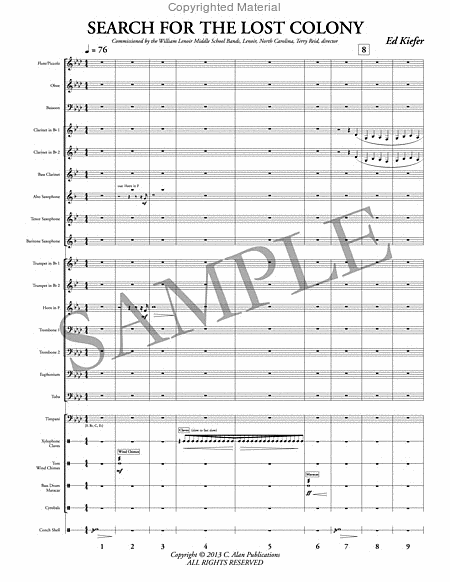
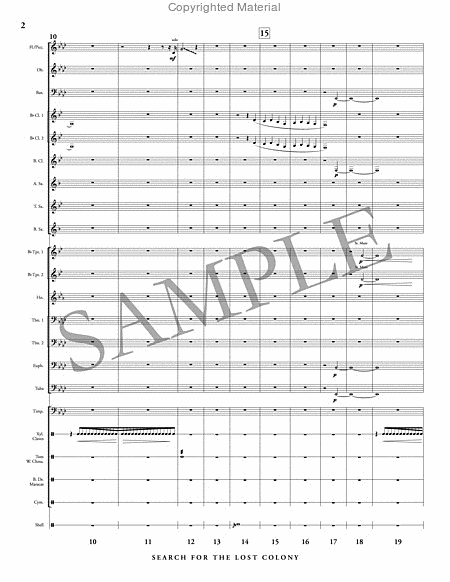
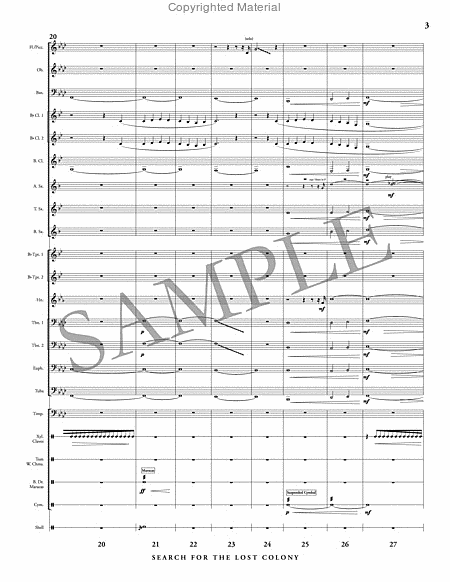
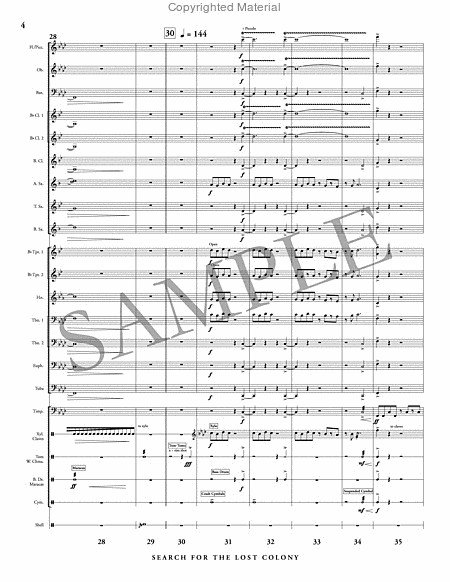
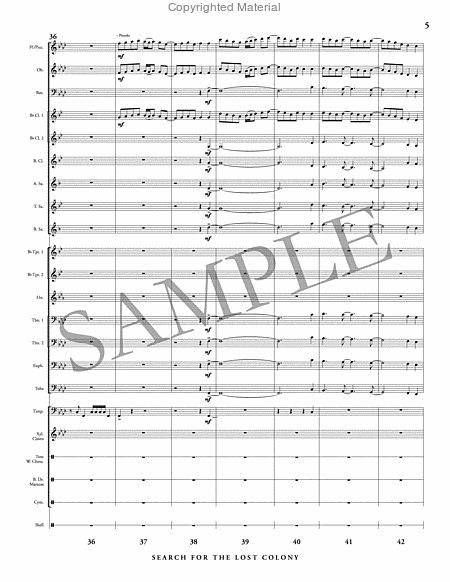
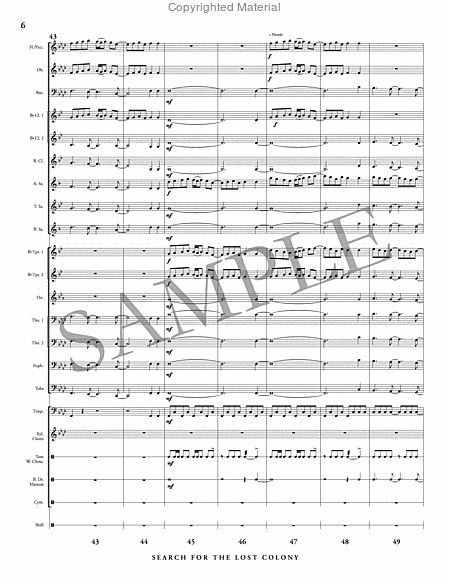
 Share
Share